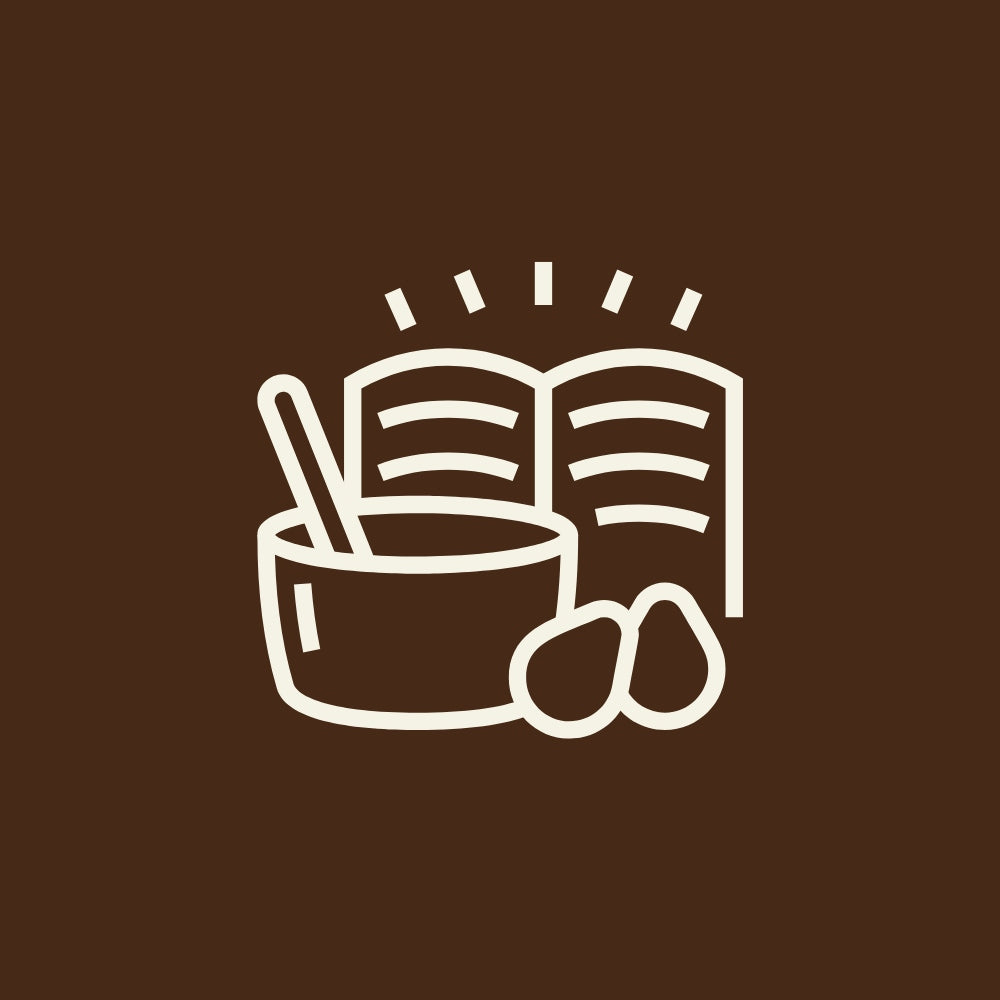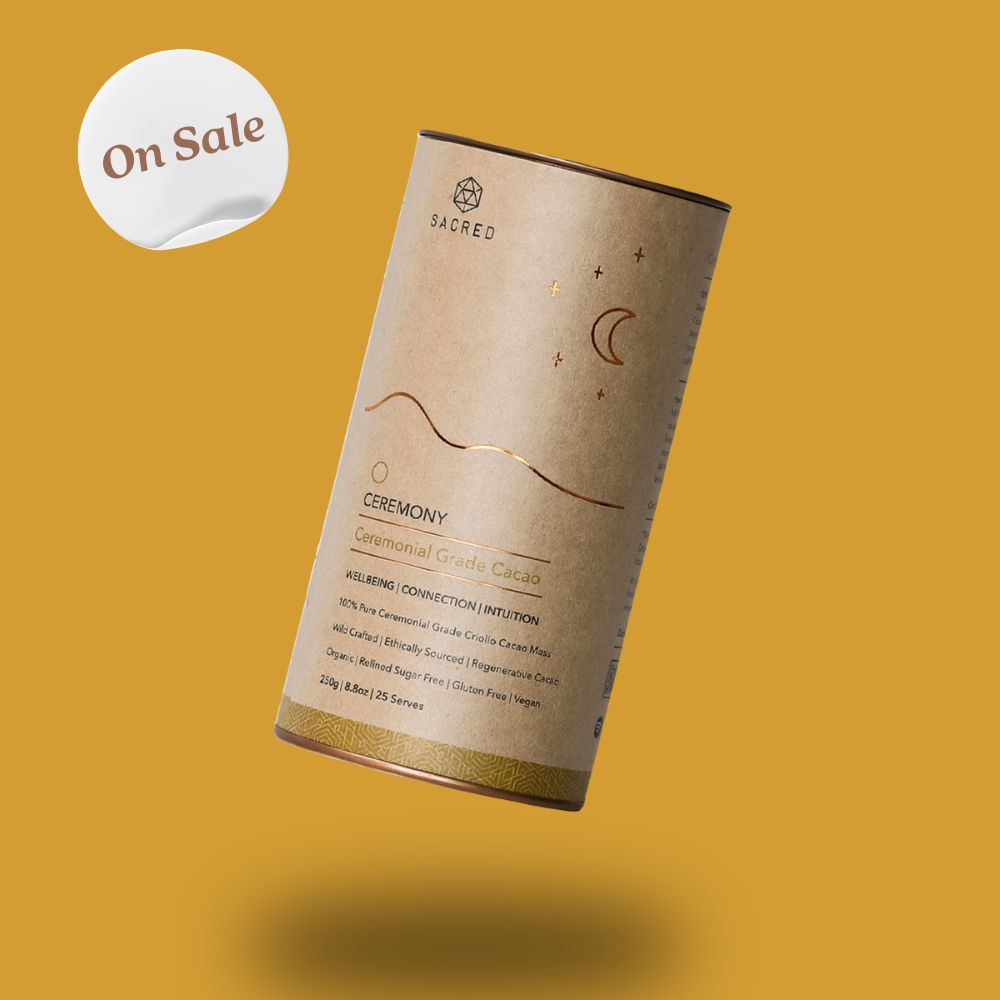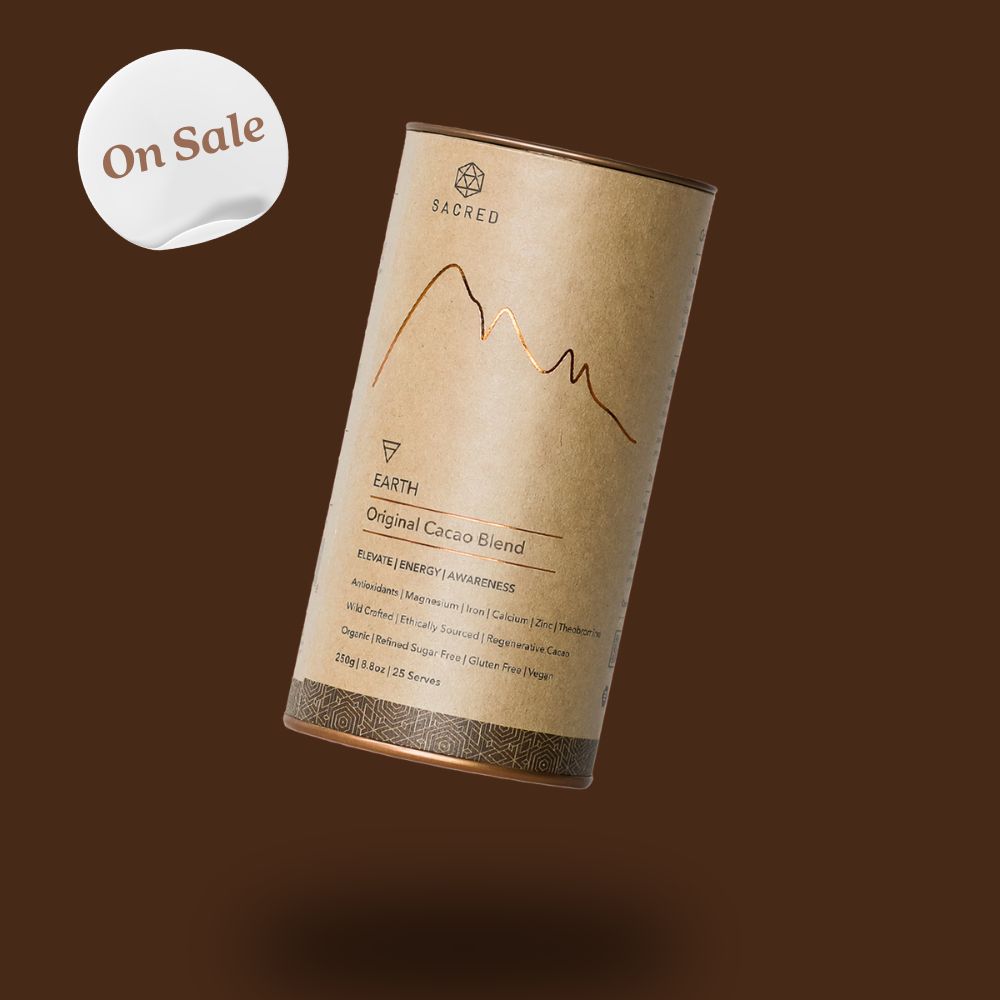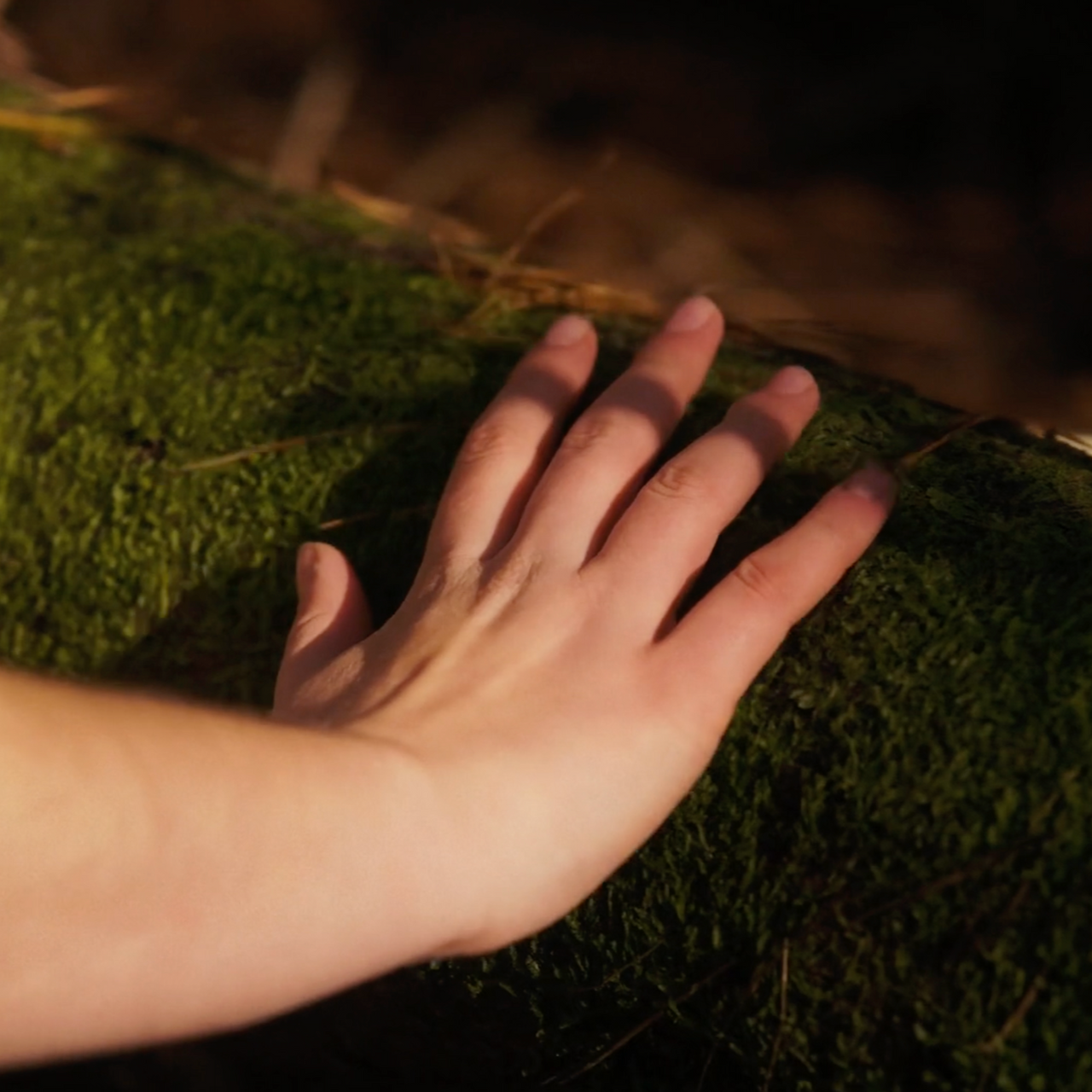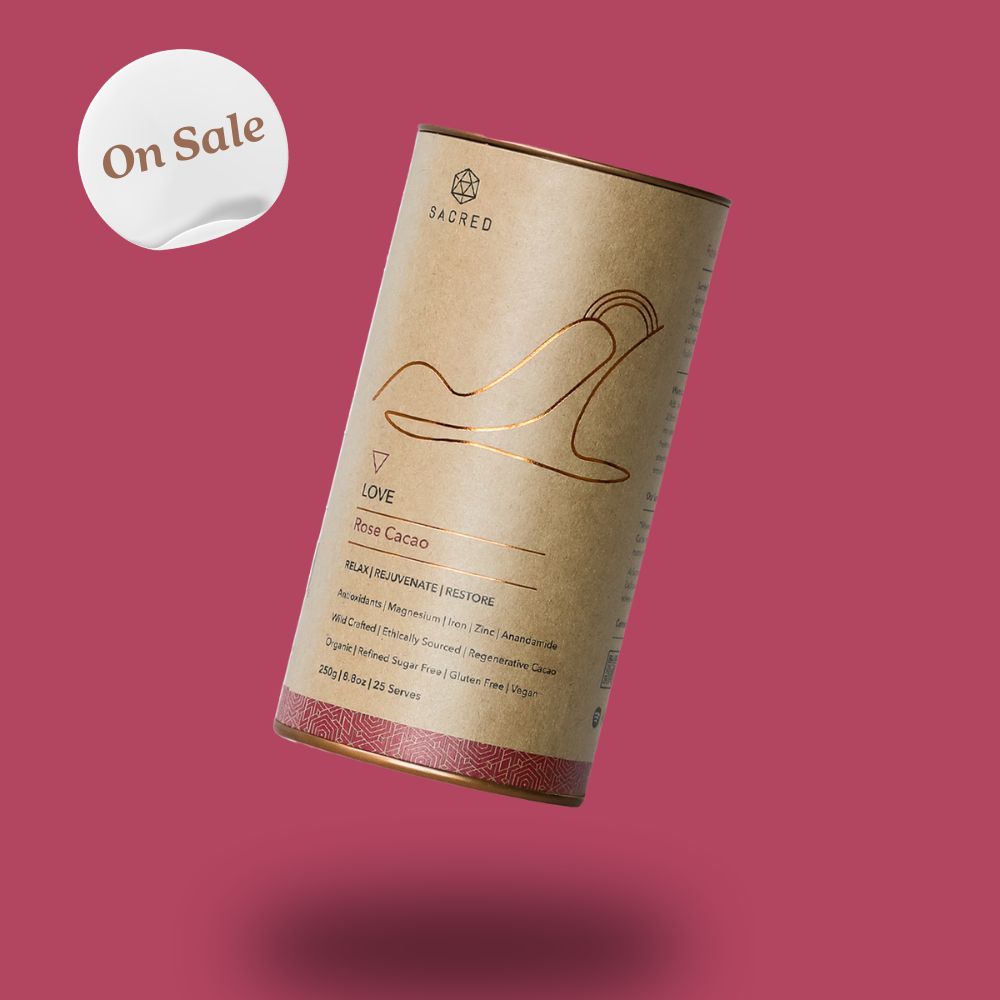For many, cacao is just the rich, velvety ingredient that makes chocolate so irresistible. But there's more to cacao than just its sweet allure. In recent years, ceremonial cacao has gained popularity as a tool for emotional and spiritual growth. While it’s often described as psychoactive, there’s a growing conversation around whether cacao can be considered psychedelic. But can something so deeply connected to the earth really induce the type of experience we typically associate with psychedelics?
Cacao's effects are subtle but profound. It doesn’t transport you to alternate dimensions like LSD or psilocybin, but it opens your heart, quiets your mind, and invites you to connect deeply with your emotions. So, while cacao isn’t exactly psychedelic in the classic sense, it certainly does offer a unique experience that’s both transformative and grounding.
Let’s unpack the idea of cacao as a psychoactive substance and understand how it differs from traditional psychedelics.
What Is Cacao And How Is It Different From Chocolate?
Before we dive into cacao’s psychoactive qualities, it’s important to understand exactly what cacao is and how it differs from the chocolate you might indulge in at your local café. Think of cacao as the raw essence of chocolate, the good stuff before it’s processed and sweetened into what we commonly recognise as chocolate bars.
Ceremonial-grade cacao is the purest form you can get, made from minimally processed cacao bean paste that retains its natural fats, nutrients, and beneficial compounds. It's worlds apart from commercial chocolate, which often contains added sugars, milk, and artificial flavours that mask its true essence. This is the kind of cacao you’d find in a ceremony – unadulterated and full of its original spirit.
When I first experienced ceremonial cacao, I was surprised by the depth of its flavour, more earthy and bitter than the chocolate bars I was accustomed to. But it wasn’t just the taste that struck me. The very act of preparing and drinking it felt sacred. There was something about the process – the intention setting, the slow sipping – that made it feel like a ritual of connection. It’s a far cry from grabbing a quick bite of chocolate for an energy boost or a sugar hit.
In Australia, where we’re surrounded by abundant local ceremonies and wellness retreats, cacao has become an essential element in these spiritual gatherings. You’ll often find it being used in group settings for meditation, yoga, and other soul-nourishing activities. The ceremonial approach to cacao draws inspiration from Mesoamerican cultures like the Aztecs and Maya, who revered cacao not just for its nutritional properties but as a spiritual bridge.
Cacao Vs. Chocolate: A Clear Distinction
Many people think of cacao simply as the base for chocolate. But there’s more to it than that. While cacao starts its journey as the same ingredient used in chocolate, its path diverges when it’s used in ceremonies or rituals.
Commercial chocolate undergoes a significant transformation. The cacao beans are roasted, processed, and mixed with sugar and other ingredients, which strips away much of the cacao’s natural properties. While chocolate can be comforting and mood-boosting, it doesn’t carry the same potency as ceremonial cacao. It lacks the complex compounds that give cacao its subtle psychoactive effects, like theobromine and phenylethylamine (PEA), which are preserved in ceremonial-grade cacao.
I remember attending a cacao ceremony in Byron Bay, where the facilitator shared a story of how ancient Mesoamerican cultures once used cacao as a spiritual offering. They would drink it before embarking on important decisions, like war or marriage, to centre themselves. In modern times, we use it to help with grounding, introspection, and heart-opening. It’s a way of reconnecting with nature and ourselves, without the buzz or crash of caffeine.

What Makes Cacao Psychoactive But Not Psychedelic?
To fully appreciate why cacao is psychoactive but not psychedelic, we need to understand how it affects our brain chemistry. When we think of psychoactive substances, we usually imagine things that influence our mood, perceptions, or thoughts. Cacao fits this description perfectly, but it does so in a much subtler, gentler way than classic psychedelics like LSD, psilocybin, or ayahuasca.
Psychoactive Compounds And Their Effects
Cacao contains a fascinating mix of compounds that contribute to its mind-altering effects. While not hallucinogenic, these compounds can shift our state of mind, boost our mood, and make us feel more connected. Here’s a closer look at the key players:
- Theobromine – This is cacao’s main alkaloid and a mild stimulant, similar to caffeine but much gentler. Unlike caffeine, which gives a quick rush and often a crash, theobromine provides a steady lift, improving circulation and heart function. I first noticed this effect during a cacao ceremony in the Blue Mountains, where the warmth spread through my chest and face, making me feel awake and alive without the usual jittery sensation of coffee. Theobromine works as a vasodilator, widening blood vessels and increasing blood flow to the brain and body by up to 40%. This makes us feel more alert, but in a calm and grounded way.
- Phenylethylamine (PEA) – Sometimes called the "love molecule," PEA is the compound responsible for the good vibes we feel when we eat chocolate. It triggers the release of dopamine, the "feel-good" neurotransmitter. In cacao, PEA works to elevate mood, increase attention, and bring about feelings of joy and happiness. I found this to be particularly true in a group ceremony, where the atmosphere was light, and I felt unusually connected to others around me.
- Anandamide – Known as the "bliss molecule," anandamide is a neurotransmitter that plays a key role in mood regulation and emotional wellness. It activates the same brain receptors that are targeted by THC, the psychoactive component of cannabis, though in a much milder form. The first time I drank cacao during a heart-opening ceremony, I felt a sense of deep calm wash over me, accompanied by a heightened awareness of the present moment. It was like the weight of everyday stresses had simply lifted.
- Monoamine Oxidase Inhibitors (MAOIs) – Cacao also contains natural MAOIs, which help regulate mood-altering neurotransmitters. These inhibitors slow the breakdown of serotonin, dopamine, and other important chemicals in the brain, leading to prolonged feelings of happiness and emotional stability. The MAOIs in cacao are subtle, contributing to its ability to smooth out emotional highs and lows without overwhelming the system.
These compounds come together to create a calming yet stimulating experience. They don't push the boundaries of consciousness like psychedelics but instead foster a shift in mood, awareness, and connection.
The Effects Of Cacao: Heart-Opening And Emotional Release
Many who have experienced cacao describe its effects as heart-opening. During my own experiences, I’ve noticed how it encourages a softening in my chest, a sense of love, empathy, and connection with myself and others. It’s often described as a “heart opener,” and for a good reason – cacao creates an environment for emotional clarity and healing.
In the first ceremony I attended, the facilitator guided us through a meditation, asking us to reflect on what was weighing us down emotionally. The cacao seemed to amplify these feelings, making them more accessible. And yet, there was no sense of fear or overwhelm. Instead, cacao helped us process emotions gently and with a sense of release. It was as though the cacao created a safe space to explore emotions that had been held in the body for far too long.
This emotional release isn’t always dramatic, but it’s incredibly profound. People often leave cacao ceremonies with a sense of emotional lightness, as if a burden has been lifted from their hearts. It’s one of the reasons why cacao is valued for its therapeutic qualities, especially in settings focused on spiritual healing and emotional clarity.
While cacao can’t induce hallucinatory experiences like psilocybin or LSD, its effects are no less significant. Instead of transporting you to alternate realities, cacao brings you into a heightened awareness of the present moment, helping you reconnect with your heart and mind in a deep and healing way.
Cacao Vs. Psychedelics: The Key Differences
One of the most common questions surrounding cacao is how it compares to psychedelics. While it shares some similarities with psychedelic experiences – like inducing shifts in consciousness, emotional release, and connection to others – cacao doesn’t fit the classic definition of a psychedelic.
Cacao: Non-Hallucinogenic And Gentle
Unlike psychedelics such as psilocybin or DMT, cacao does not induce hallucinations. There’s no visual distortion, no sense of “ego death,” and no journey into alternate realities. It doesn’t scramble your sense of time or reality; rather, it brings you into deeper contact with your feelings, thoughts, and emotions – but always within the realms of everyday experience.
During one particular ceremony, I sat in silence with my eyes closed, and instead of visions or profound experiences, I felt a warm, expansive energy that gently elevated my awareness. It was like being in the quiet of a morning sunrise, where everything feels brighter and more connected without any overwhelming sensations.
Cacao’s psychoactive qualities are subtle and non-disruptive. It’s described by many as a “gentle entheogen,” meaning it helps you connect to a deeper sense of wisdom and clarity but doesn’t force you to confront intense or overwhelming visions. It’s often used as a support tool during or after more intense psychedelic experiences, like ayahuasca, to integrate emotions and maintain a grounded sense of connection.
Chemical Differences: Why Cacao Doesn't Fit The Psychedelic Mould?
When we compare cacao to classic psychedelics, the key difference lies in the compounds it contains. Cacao lacks the potent hallucinogenic substances found in psychedelics, like dimethyltryptamine (DMT) or psilocybin. These compounds are responsible for the intense and often visually immersive experiences associated with substances like ayahuasca or magic mushrooms.
Cacao’s MAO inhibitors might enhance the effects of other substances when consumed together, but cacao alone does not cause the same profound shifts in consciousness that psychedelics do. While cacao can enhance mood, heighten emotional awareness, and offer a sense of spiritual connection, it doesn’t induce the dramatic shifts in perception that we associate with true psychedelics.
The Role Of Cacao In Mental Clarity And Creativity
While cacao’s effects are often described as heart-opening and spiritual, it’s also gaining recognition for its ability to enhance cognitive function. Many who drink cacao in a ceremonial context report increased focus, creativity, and mental clarity. This makes it particularly popular among those looking to boost their cognitive performance without the overstimulation or crash associated with other substances.
Cacao As A Natural Nootropic
A nootropic is any substance that enhances cognitive function, particularly in areas like memory, creativity, or focus. While cacao may not have the same immediate, intense cognitive boosts as substances like caffeine, its effects are far more sustained and gentle. Here's how cacao helps with cognitive enhancement:
|
Compound in Cacao |
Effect on the Brain |
Benefit |
|
Theobromine |
A mild stimulant similar to caffeine. |
Increases alertness and mental energy. |
|
PEA (Phenylethylamine) |
Boosts dopamine, improving mood and motivation. |
Increases focus and enthusiasm. |
|
Flavonoids/Polyphenols |
Improves cerebral blood flow and cognitive function. |
Enhances memory and attention. |
|
MAOIs |
Regulate mood-altering neurotransmitters. |
Prolongs feelings of happiness and mental clarity. |
|
Anandamide |
Elevates mood and enhances mental focus. |
Supports emotional stability and concentration. |
From my own experience, after drinking cacao in a calm, focused setting, I often feel more present and engaged. Whether I’m writing, brainstorming, or simply reflecting, cacao’s subtle but noticeable effects help clear mental fog and enhance the clarity of my thoughts. It’s like I’ve been given the mental space to think more clearly and creatively.
I recall a time when I attended a cacao ceremony in the heart of the Daintree Rainforest, surrounded by the hum of nature. As the ceremony began, we drank our cups of cacao, and within moments, my mind sharpened. The thoughts that had been jumbled and scattered became aligned, and I found myself in a space of deep creativity. It was as if the cacao had created the perfect conditions for ideas to flow. It wasn’t a forced feeling of being "high" or overstimulated – just a gentle opening of the mind, a quiet awakening.
Increased Mental Clarity And Energy Without The Jitters
For many people, the jittery effects of coffee or energy drinks can be a dealbreaker. These stimulants give an initial burst of energy, but they often leave you with a crash later. Cacao provides a different kind of energy. It’s more sustained and doesn't disrupt your calm, alert state of mind.
During a recent morning cacao ceremony in the Adelaide Hills, I felt an increase in alertness, but it wasn’t the usual “wired” feeling I get from coffee. Instead, it was like I had just enough energy to stay focused without feeling overwhelmed. I was able to stay present throughout the day’s activities, and my energy levels remained steady, not spiking and crashing as they often do with caffeine.
The stimulating effects of cacao are far more subtle, helping you feel grounded and focused without the edge that comes with stronger stimulants.

The Role Of Cacao In Spiritual Practices: Unlocking Emotional Healing
Cacao has a rich history of being used as a spiritual ally, especially in indigenous practices. It has long been revered for its ability to facilitate emotional healing and spiritual connection.
Cacao As A Powerful Spiritual Ally
Cacao’s spiritual benefits are often tied to its ability to open the heart and clear emotional blockages. Many practitioners use cacao as part of a meditative practice, as it encourages a heightened state of awareness and connection to one’s inner wisdom. It has also been used in combination with yoga and breathwork to deepen emotional healing and encourage introspection.
During a heart-opening ceremony I experienced on a small property near Byron Bay, the facilitator guided us in a deep meditation while we sipped our cacao. As I focused on my breath, I felt my heart centre expand, opening to feelings of deep compassion and love. The cacao didn’t force me into any particular emotional state; it simply helped me access emotions that had been locked away. It was as though the cacao was inviting me to feel everything with more clarity and compassion.
Cacao’s Role In Personal Transformation And Integration
Unlike psychedelics, cacao doesn’t push us into uncharted emotional territory. Instead, it creates the space for healing, emotional release, and personal growth. This is why cacao is often used as a support tool after intense spiritual or psychedelic experiences. For example, after a deeply emotional meditation or psychedelic journey, cacao can help integrate those experiences, making sense of them in a grounded way.
Cacao is undoubtedly a psychoactive substance, offering a gentle, heart-opening experience that shifts emotional and mental states. However, it is not a psychedelic in the traditional sense. Unlike substances like psilocybin or ayahuasca, cacao does not induce hallucinations or drastically alter consciousness. Instead, its effects are more subtle – a boost in mood, mental clarity, and emotional healing.
Ceremonial cacao has been used for centuries in indigenous cultures for its spiritual and ceremonial significance. Its combination of compounds like theobromine, PEA, and anandamide provides a gentle but noticeable shift in perspective, making it a popular tool for introspection, creativity, and emotional release. While cacao may not have the mind-bending effects of classic psychedelics, its heart-opening and emotionally supportive qualities make it a valuable ally in both spiritual practices and emotional healing.
Whether you're sipping cacao in a ceremonial setting, using it to enhance focus and creativity, or seeking emotional clarity, cacao offers a gentle yet profound experience that opens the door to deeper self-awareness, without pushing you into overwhelming territory. It is a psychoactive, but not a psychedelic, tool for those seeking subtle yet transformative experiences.
A full ceremonial dose of cacao, recommended only for shamanic ritual purposes, is between 40g-50g. The mental and physical sensations of this kind of experience could be likened to a light dose of psychedelics. I’ll conclude with what Nicki Adams, who gave us the article ‘Cacao - The Love Drug’ wrote, “Combine that with an intentional set and setting, and anyone could have a powerful, mind-expanding experience.”
Written by Laura Roberts
Connect | Instagram
Learn more about where we source our cacao
The Ashaninka Way of Life
Join a Sacred Ceremony
Shop | Sacred Cacao







